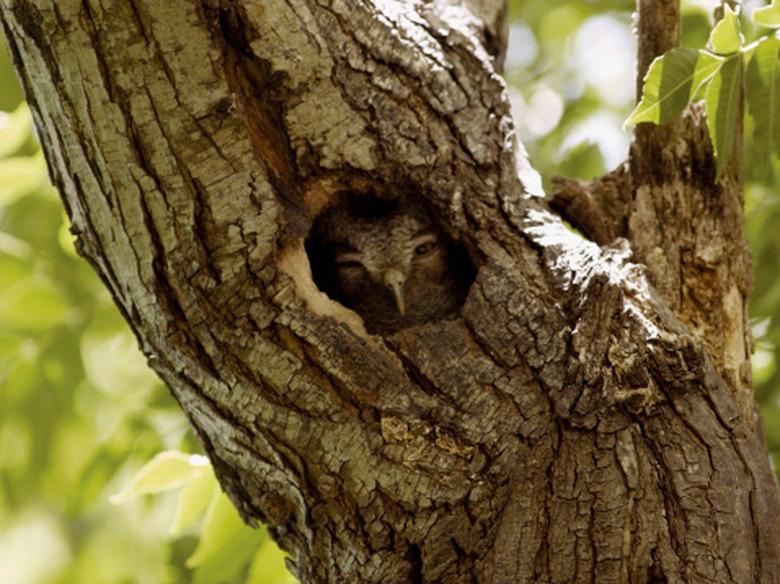How To Fill A Tree Hole With Expandable Foam
Many holes in tree trunks are purely cosmetic defects that pose no real problem or health issue for the tree. However, animals or insects, such as bees, can infest the tree through the holes, creating a problem for surrounding homeowners.
Things Needed
- Ladder (optional)
- Flashlight
- Screwdriver (optional)
- Expandable spray foam
- Paper towel or rag
- Knife
- Trash bag
Many holes in tree trunks are purely cosmetic defects that pose no real problem or health issue for the tree. However, animals or insects, such as bees, can infest the tree through the holes, creating a problem for surrounding homeowners. In addition, holes that develop on a horizontal branch or the top of the trunk collect rainwater. This standing water rots the tree over time and also breeds mosquito populations.
Step 1
Remove the top from a can of expanding spray foam and screw the tube onto the nozzle until it is securely attached. Shake the can for 10 to 20 seconds to activate the foam inside the can.
Step 2
Place a ladder next to the tree, if needed, and climb onto it until you can reach the hole. Look into the hole using a flashlight to ensure that no water is in it. If water is in the hole, wait until it dries before filling it with foam. Chip out any dead or rotting material using the tip of a screwdriver.
- Many holes in tree trunks are purely cosmetic defects that pose no real problem or health issue for the tree.
- Remove the top from a can of expanding spray foam and screw the tube onto the nozzle until it is securely attached.
Step 3
Direct the tube of the foam can into the center of the hole as far as you can. Press down on the top of the nozzle to begin dispensing the foam into the hole. Continue depressing the nozzle until the hole is halfway filled and release the nozzle.
Step 4
Wipe up any spilled foam immediately using a paper towel or rag since it may stain some areas of the tree after it dries.
Step 5
Re-examine the hole after waiting 10 to 15 minutes to allow the foam to fully expand. If it is not completely filled, spray additional foam into the hole until it reaches the top.
Step 6
Wait until the foam fully cures and hardens, which typically takes overnight. Cut off any foam that has expanded outside the hole, using a sharp knife.
- Direct the tube of the foam can into the center of the hole as far as you can.
- Continue depressing the nozzle until the hole is halfway filled and release the nozzle.
Warning
Make sure no insects or animals are inside the hole before you fill it; never seal a creature inside a tree, as it may damage the tree finding another way out.
